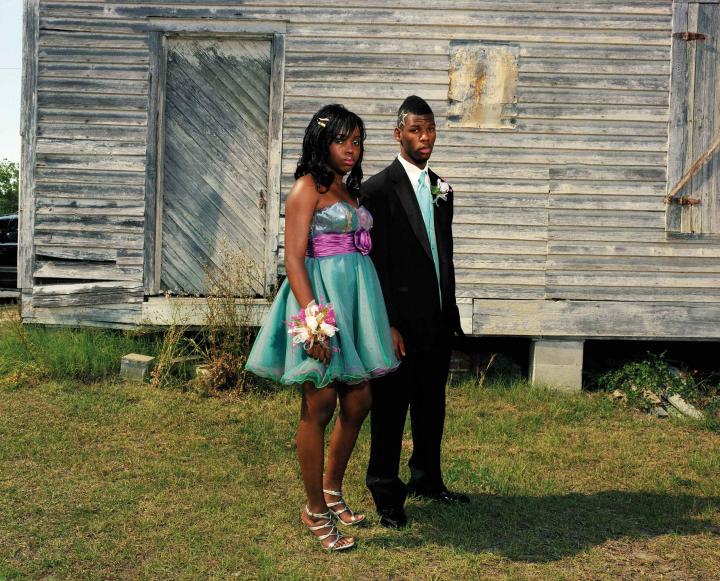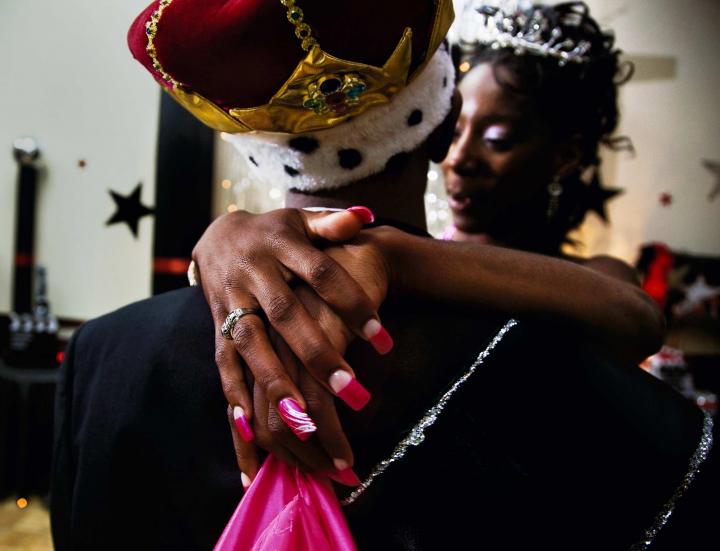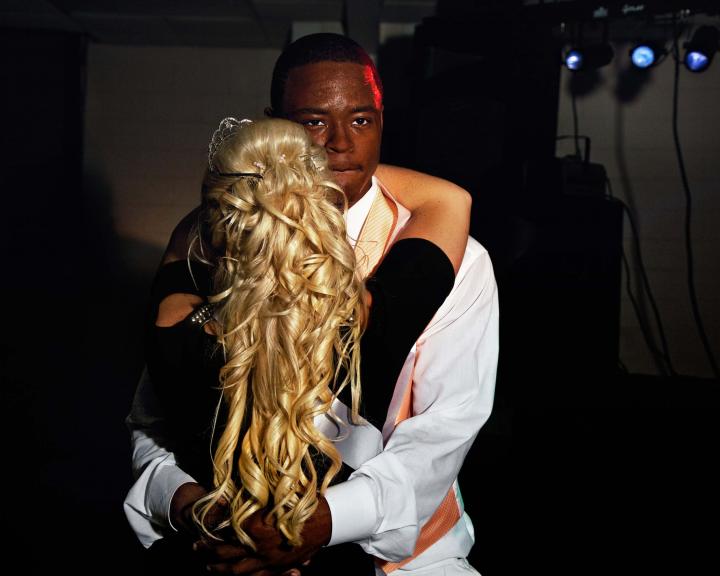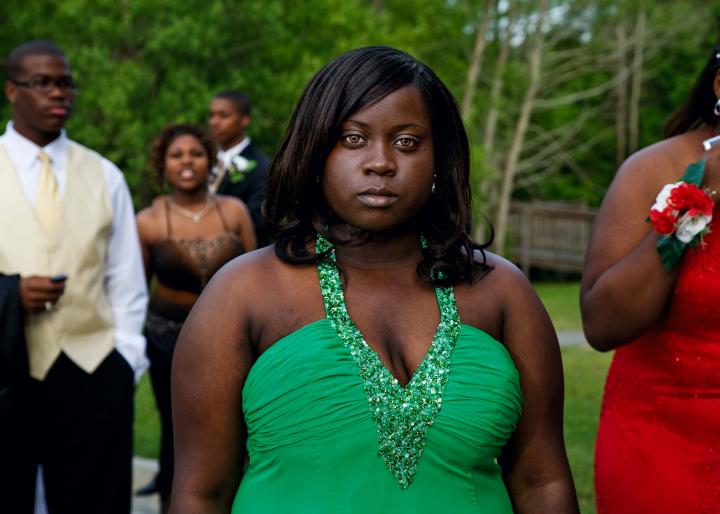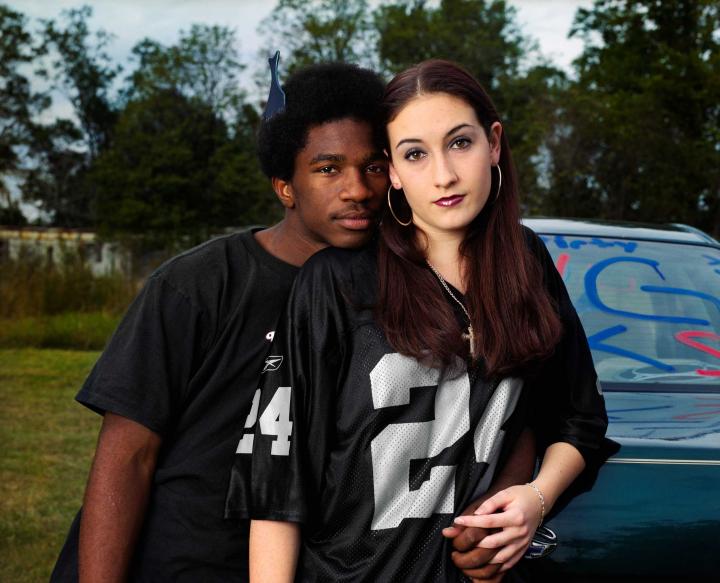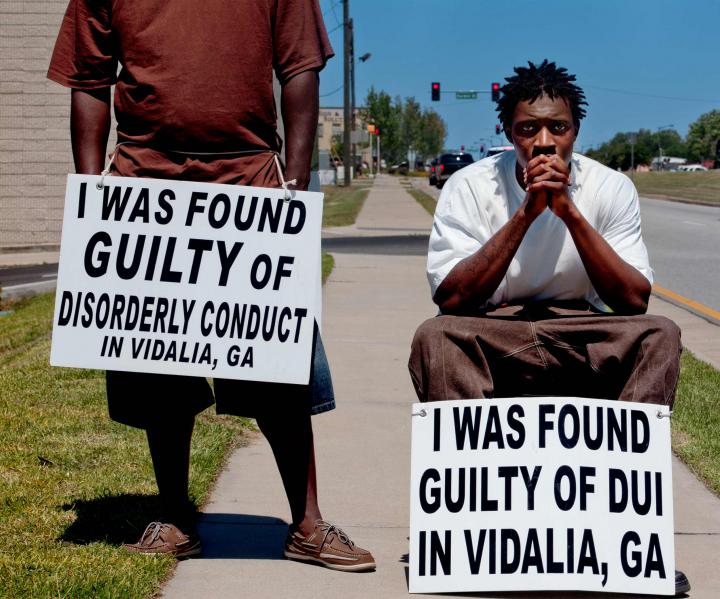American photographer Gillian Laub (b. 1975) has spent the last two decades investigating political conflicts, exploring family relationships, and challenging assumptions about cultural identity. In Southern Rites, Laub engages her skills as a photographer, filmmaker, and visual activist to examine the realities of racism and raise questions that are simultaneously painful and essential to understanding the American consciousness.
In 2002, Laub was sent on a magazine assignment to Mount Vernon, Georgia, to document the lives of teenagers in the American South. The town, nestled among fields of Vidalia onions, symbolized the archetype of pastoral, small town American life. The Montgomery County residents Laub encountered were warm, polite, protective of their neighbors, and proud of their history. Yet Laub learned that the joyful adolescent rites of passage celebrated in this rural countryside—high school homecomings and proms—were still racially segregated.
Laub continued to photograph Montgomery County over the following decade, returning even in the face of growing—and eventually violent—resistance from community members and local law enforcement. She documented a town held hostage by the racial tensions and inequities that scar much of the nation's history. In 2009, a few months after Barack Obama’s first inauguration, Laub’s photographs of segregated proms were published in the New York Times Magazine. The story brought national attention to the town and the following year the proms were finally integrated. The power of her photographic images served as the catalyst and, for a moment, progress seemed inevitable.
Then, in early 2011, tragedy struck the town. Justin Patterson, a twenty-two-year-old unarmed African American man—whose segregated high school homecoming Laub had photographed—was shot and killed by a sixty-two-year-old white man. Laub’s project, which began as an exploration of segregated high school rituals, evolved into an urgent mandate to confront the painful realities of discrimination and structural racism. Laub continued to document the town over the following decade, during which the country re-elected its first African American president and the ubiquity of camera phones gave rise to citizen journalism exposing racially motivated violence. As the Black Lives Matter Movement and national protests proliferated, Laub uncovered a complex story about adolescence, race, the legacy of slavery, and the deeply rooted practice of segregation in the American South.
Southern Rites is a specific story about twenty-first century young people in the American South, yet it poses a universal question about human experience: can a new generation liberate itself from a harrowing and traumatic past to create a different future?
Southern Rites is curated by Maya Benton and organized by the International Center of Photography.
Availability
This exhibition is available for tour. If you are interested in finding out about availability or to reserve a slot on the tour, please contact travelingexhibitions@icp.org.
Exhibition Specs
Content: 42 walls works, 29 vitrine objects, 1 film, 1 scotchprint
Running length: Minimum of 350 running feet required
The highly acclaimed catalogue Southern Rites, published by Damiani, was named one of the best books of the year by Time, Vogue, Smithsonian, American Photography, and numerous other publications. It was also nominated for a Lucie Award, which honors the greatest international achievements in photography. The catalogue is available to all tour venues.
Tour Venues
Phillips Exeter Academy, Lamont Gallery | Exeter, New Hampshire
October 26–December 15, 2018
Chazen Museum of Art, University of Wisconsin | Madison, Wisconsin
January 25–May 12, 2019
Oregon Jewish Museum and Center for Holocaust Education | Portland, Oregon
February 5–May 24, 2020
Center for Art, Design and Visual Culture, Univeristy of Maryland, Baltimore County | Baltimore, Maryland
October 15–December 12, 2020
Asheville Art Museum | Asheville, North Carolina
April 1–June 20, 2022
Atlanta Contemporary | Atlanta, Georgia
September 22, 2022–January 8, 2023
George Eastman Museum | Rochester, NY
June 30–December 31, 2023








